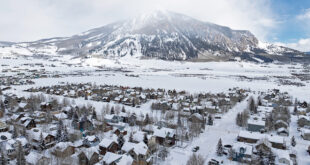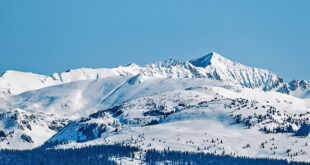If you hadn’t noticed, there are a lot of white people in Crested Butte. Let’s go to a place that is uncomfortable for many but was touched on in last week’s Overheard and in a conversation I had with the potential developer of the Brush Creek housing project: Race.
More than one person approached me this week with raised eyebrows over the “I’ve never seen so many white people riding buses” quote in the Overheard box.
The basic back-story was that the Overheard was overheard on a weekend Mountain Express bus ride. As explained to me (I did not hear it myself), it came from a young woman new to Crested Butte. I took it not as a racist comment but more as an epiphany from someone out of her comfort zone. Her primary life experience was probably pretty suburban, where taking a public transportation bus ride was not a regular occurrence. Her vision of transit riders was probably more stereotypically urban in nature. According to a report from the American Public Transportation Association (APTA), Who Rides Public Transportation, “Communities of color make up a majority of riders (60%).”
So I took the Overheard comment as an “Aha moment” of clarity that in some communities, people like her use buses. I interpreted it as a light learning experience.
Some other interesting statistics from the January 2017 APTA study include that overall, “more than half (51%) of transit riders hold a bachelor’s degree or some level of graduate education.” About 71 percent of the riders are employed and 7 percent are students. Most transit riders (55%) are women and close to 80 percent “fall into the most economically active age range from 25 to 54.” Most people use public transit for the economy of it or for so-called intangible benefits such as convenience.
Anyway, it’s been great that this valley has invested in and utilized public transit services for decades, primarily through the Mountain Express and more recently through the valley-wide RTA bus service. Buses are a proud element of the Crested Butte and Gunnison Valley history and character.
So back to race…
I was having coffee with potential Brush Creek developer Gary Gates about a week ago and he presented me with a chart of demographics on Crested Butte and its racial makeup. It showed that of the 1,260 people counted as living in Crested Butte (in the 2010 census data chart), well over 95 percent were white.
He passionately argued that people of all racial and economic categories should have the opportunity to live at the north end of the valley and not just the 1 percent. I wholeheartedly agree. He said his proposed project would help provide a place for that. I’m not sure how much it will actually do in that regard since you have a chicken and egg situation. And based on recent statistics, Gunnison County is made up of about 88 percent whites. But Gary saw it as a “social justice” issue and I respect that.
There are several articles available on the internet touching on why racial minorities do not generally populate ski communities. According to a Snowsports Industries America (SIA) study from 2013, African Americans made up just 7.3 percent of alpine skiers. A Powder Magazine opinion piece from a year ago encouraged the ski industry as a whole to expand its reach to include more young people and racial minorities. That makes a lot of sense.
What if Crested Butte Mountain Resort and the community took that potential winter bull by the horns? It would not be a quick effort but what if instead of only marketing for the same people who like skiing Breckenridge or Steamboat, the resort also set up a program to get city kids from Denver, the Springs, GJ and Santa Fe to come on inexpensive overnight weekend trips during the “slow times” of the winter season. Set them up to experience the mountains. Think five or 10 years from now and the potential of cultivating a different, dedicated clientele. Consider focusing at least some marketing and tangible efforts on a younger, less white customer. Get a new group hooked on the beauty and lifestyle of a mountain village before other resorts figure out that potential. Some relatively inexpensive effort now could pay dividends in the future.
Back to Brush Creek. Even if Gary’s theory were correct that his proposed project would attract a more diverse population to the area, I would argue it is better located on the large tract of land next to the Mt. Crested Butte town hall. There it would easily address many of the persistent problems that keep coming up with the plan as proposed (density of the project, size of buildings, water and sewer availability, and easy public transportation access are quick examples). I sense community cooperation instead of conflict in such a move.
I suggested that potential action to Gary over coffee but he felt strongly that the Brush Creek location is a better fit. He was not interested in that Mt. Crested Butte alternative and, given that he says he’ll be putting in millions of dollars to get the project up and running, he gets to make that direction call and not me. So we’ll continue to disagree on that but his demographic numbers are not wrong on the lack of racial diversity in this place. It has always been an issue.
That is why I would think making an effort now to tap into a younger and less white population base to cultivate more customers over the long run could have more impact to attract diversity and address “sustainable” business than building a big apartment complex two miles from town. Foster a new demographic that would first visit and become exposed to the magic of the place. From there, perhaps there would be an adventurous percentage (like many of us) who eventually make the move to live in this mountain village and change the demographics, where for some it is still a surprise to see so many white people riding a bus.
—Mark Reaman
 The Crested Butte News Serving the Gunnison Valley since 1999
The Crested Butte News Serving the Gunnison Valley since 1999




